They say a dog is a man’s best friend, so why not use them for therapy as well, eh?
This article is all about the best therapy dogs so buckle up for a ride!
I mean, I’m a huge advocate for mental health, and seeking therapy isn’t something to be ashamed of. As a result, this article is written specifically for you and will assist you in choosing the best therapy dog for your needs.
Now, let’s get on with it, shall we, M’lady?
What is a therapy dog, you ask?
You’ve come to the right place if you’ve been wondering about this.
In layman’s terms, therapy dogs are canines that provide comfort and assistance to people by reducing stress, anxiety and providing a sense of connection in stressful and difficult situations.
Therapy dogs are frequently seen at places including hospitals, retirement homes, nursing homes, schools, libraries, hospices, and disaster regions.
These helpful doggos are usually taught to engage with people other than their handlers.
Many medical practitioners recommend them as a therapeutic aid as well.
Role Of Therapy Dogs

Therapy dogs’ roles are simple and clear: to help individuals.
A therapy dog is a trained dog that provides comfort and affection to people in places like hospitals and schools.
The role of the best therapy dogs is to respond to and interact with people depending on their surroundings, while also being instructed by their owner.
In general, any therapy dog will interact with a variety of people and different situations. These dogs must and can be trained to behave and listen to their caretakers in these circumstances.
According to research, using therapy dogs to cope with traumatic experiences could even help reduce symptoms of depression, post-traumatic stress disorder, and anxiety.
The increase in bonding and cooperative reactions decreases stress and anxiety levels, and there is a rise in happy chemicals such as serotonin.
They also assist a person in becoming more sociable. Dogs truly are a man’s best friend!!
Keep in mind that a Service Dog and a Therapy Dog are not the same.
Service dogs are specifically trained to give particular assistance to people with disabilities such as sight or hearing impairments.
You can read this guide on the difference between a Service Dog, Therapy Dog & Emotional Support Dog for a better understanding.
Have you ever watched a movie where the guy or girl goes through a breakup and decides to get a pet for themselves?
Take, for instance, Chuck from Gossip Girl, he gets a pet dog named Monkey from Dan Humprey, (tell me about it) to help him learn to feel again after he becomes emotionally numb after breaking up with his girlfriend Blair Waldorf.
Monkey was, without a doubt, the best therapy dog on the show.
Do you see where I’m going with this?
Now that we know what a therapy dog is and their role, let’s move on to the fun part: deciding which therapy dog to adopt!!
And don’t worry, we’ve divided the list of dog breeds by size, so whether you’re a big size gal, a small size gal, or a medium-size gal, we’ve got you covered.
Table of Contents
Best Small Dogs For Therapy
1. Beagle
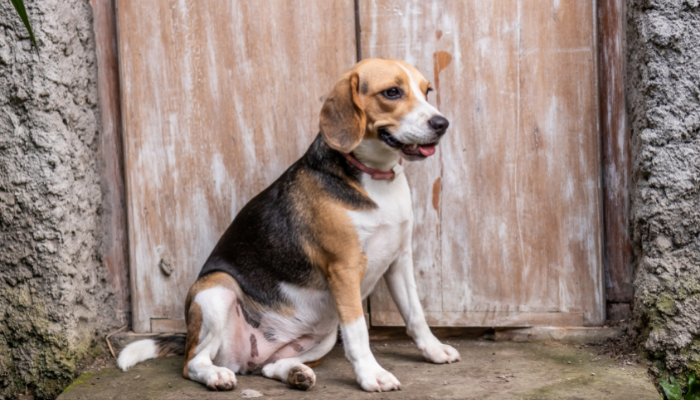
Beagles are very clever and get along well with humans individually or in big groups, as well as youngsters, making them an ideal therapy dog.
They are also always keen to meet new people.
And there’s more!! They also don’t shed much, making this one of the best therapy dogs to consider if you’re looking for a dog with minimal shedding.
Beagles are also a great therapy dog for large families or therapy dog for children’s hospitals since it is great with youngsters.
Oh! Did I mention that they are an extremely active and cheerful breed of dog? So, get a serotonin boost from your adorable beagle.
2. Bichon Frise

They began as companion dogs for sailors. Bichon Frise is highly energetic and friendly towards humans in general, making them a great candidate for the best therapy dog.
They enjoy playing and spending quality time with people, making them an excellent companion who will encourage you to go outside and enjoy the sun’s rays and get some natural vitamin D.
The added benefit of having a Bichon Frise in the house is that they are hypoallergenic and do not shed.
So, go ahead, lil rockstar, and get yourself a wee cotton furball.
3. Cavalier King Charles Spaniel

Apart from those long and lovely ears, a Cavalier King Charles Spaniel is incredibly obedient and compassionate, making them an excellent choice as therapy dogs for relaxing patients with anxiety difficulties.
This little canine also enjoys sleeping and resting!
A Cavalier King Charles Spaniel is the best therapy dog for such an activity if you want a cuddle partner to sleep the bad days away.
They have a highly friendly nature and get along well with everyone, even children, making them excellent emotional support dogs too.
4. Corgi
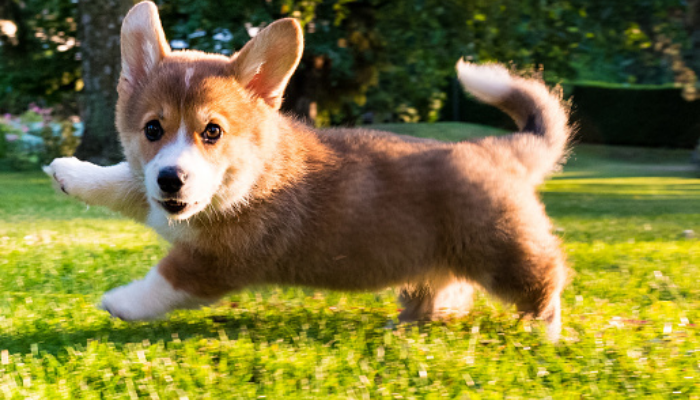
Corgis are a really joyful and happy-go-lucky dog, ready to cheer up any lonely soul!
They are also a great emotional support dog since they love being affectionate and receiving affection as well!
This little breed of dog will rapidly understand their tasks as therapy dogs and enjoy fulfilling them since they revel in attention!
A win-win situation.
Corgis are the best therapy dogs because they adapt to their surroundings and understand the situation as they’re a highly intelligent breed of dog!
So if you like corgis, this is a no-brainer!
5. Dachshund

This adorable sausage-looking dog will put a smile on anyone’s face.
And it’s not just their unique form that makes people grin; they also have a really vibrant personality and a little bit of stubbornness, but who doesn’t, eh?
Dachshunds are extremely kid-friendly canines, making them an ideal companion for children in hospitals and schools who need to be soothed, as well as for stress-relieving sessions at schools.
The bottom line, they are excellent emotional support dogs and one of the best options for a therapy dog.
6. Pomeranian
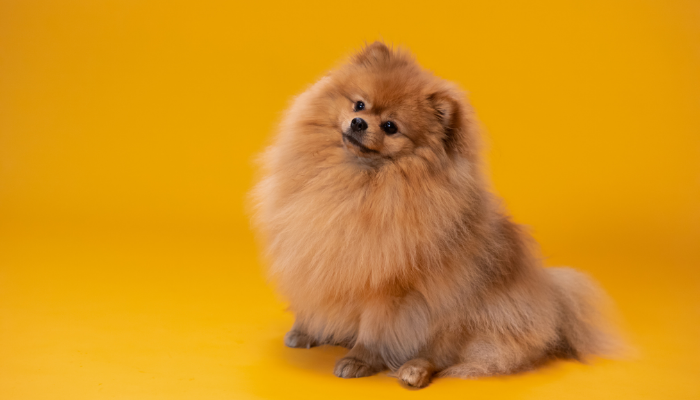
A Pomeranian?
I’m sure you expected this little fluff ball to make the cut, didn’t you?
They are extremely sociable and friendly, easily making friends wherever they go wagging their tails.
Despite their small size, they have a big loving personality and make excellent watchdogs as well as therapy dogs for homebodies.
Because Pomeranians require little to no exercise, they are ideal for homebound patients.
They are also extremely affectionate and have an outgoing, nature-loving personality, making them ideal therapy dogs for the elderly.
Pomeranians have become more popular in elder care as a result of this! So, if you’re a homebound patient or an elderly person, this dog is ideal for you.
7. Pugs
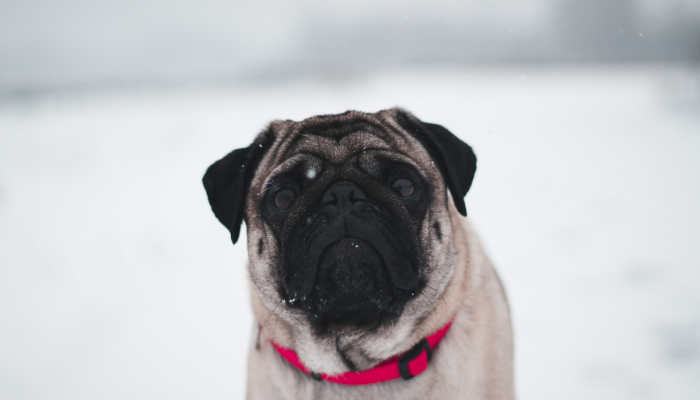
A pug and a mug are all I need for a good day!
This cute little doggo has a great temperament and enjoys being around people and socializing!
They’re also the best therapy dogs for people suffering from depression.
These adorable pugs enjoy getting petted and being the life of the party, and they are always happy dogs.
They make excellent therapy dogs because of their social skills and their ability to blend in with their surroundings, whether it’s a hospital or a school.
They also make a great first dog, so if this is your first time, a pug is a fantastic and ideal choice.
My next-door neighbor has a cute little pug named Casper, and I just want to say that she is the most adorable doggo I’ve ever seen.
8. Toy Poodle

If beauty with a brain is a dog it will definitely be a POODLE!
They are not aggressive, as their beautiful coat and face suggest, and make an excellent dog for a person’s emotional well-being.
Poodles are considered one of the best therapy dogs for depression because they have a lot of energy and a lively and friendly attitude.
The Toy Poodle is a popular therapy dog because it enjoys being interactive and can be trained to perform tricks that can help ease stress and frustration.
To see an excited Poodle waiting for them to play with would brighten anyone’s day.
9. Yorkshire Terrier
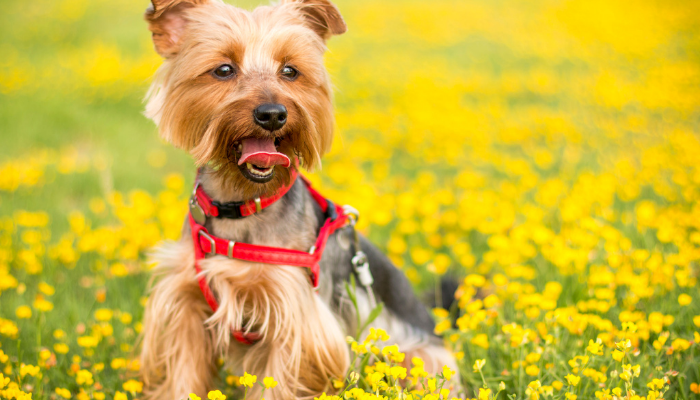
Do you have any idea what a Yorkshire Terrier makes me think of?
A high-end model in a shampoo commercial! Take a look at that mane!
Yorkshire Terriers are a wonderful source of positive reinforcement for children who are hospitalized.
They have a very lovable personality and nature, so it’s not just about their gorgeous coat, but also about their personalities, because “personality matters,” right?
They can be naughty at times, but they are also extremely loyal.
Yorkshire Terrier is a very easy-going and loving personality that can brighten anyone’s day.
As a result, a Yorkshire Terrier may be a model for a hair commercial as well as the best therapy dog!
Best Medium Therapy Dogs
Welcome to the forum’s medium-sized dog section! These are in the middle of the small and large sizes, but they can occasionally vary in size and lean toward a small or large, so now that we’ve established that, let’s get started.
It’s time to move on to the medium-sized dog area!
These dogs are in the medium size range, although they can occasionally vary in size and lean toward the tiny or large, so now that we’ve cleared that, let’s get started.
1. Bulldog
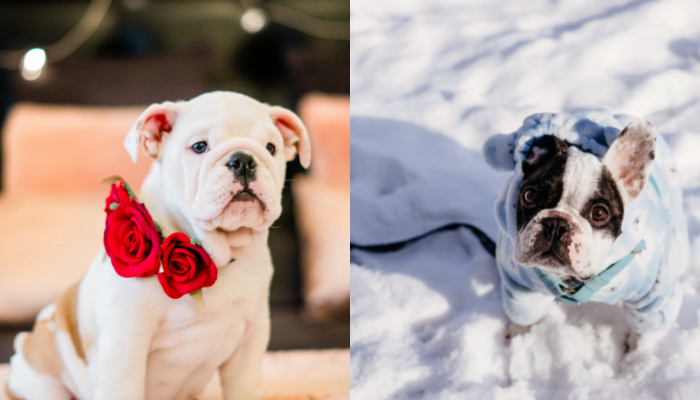
Let’s be clear: they may have a grumpy face, but they are not what the grumpy face appears to suggest.
Bulldogs are a fun-loving and friendly dog breed and these grumpy-looking dogs are also very loving and affectionate.
Bulldogs are a friendly and fun-loving dog breed that is also extremely affectionate
Another entertaining factor of getting a bulldog as a therapy dog?
You have the option of either getting a French or English Bulldog. Let’s dig a little deeper, shall we?
1. English Bulldogs
English Bulldogs are kind, sweet, and shy, but not so much that they won’t snuggle and be touched!
They may be quite sociable once they recognize your face, making them a perfect breed for therapy
2. French Bulldog
Well, a little bird told me people prefer French Bulldogs as the best therapy dog because they are more affectionate and have a lively temperament compared to the other bulldog breeds.
French Bulldogs like social interaction and have a natural need to be around humans, therefore they are frequently taken to hospitals and nursing homes to cheer up sick patients.
2. Collie
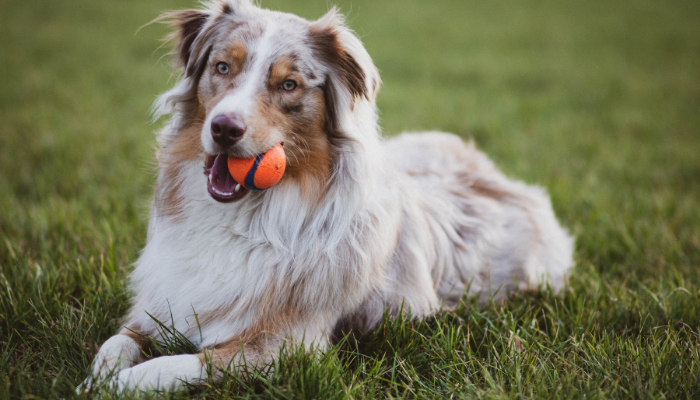
Collie dogs were bred to herd sheep, but look at them now!
They are a highly diligent and clever dog breed that will quickly make you happy.
These purebreds are extremely bright and sensitive, and they will cater to and assist with tasks.
And because of their sensitive nature, they are also the best therapy dogs for patients suffering from post-traumatic stress disorder.
Collie dogs are recognized as some of the best therapy dogs due to their peaceful nature.
It’s no surprise that Queen Victoria has a soft spot for the Collie breed.
4. Staffordshire Bull Terrier
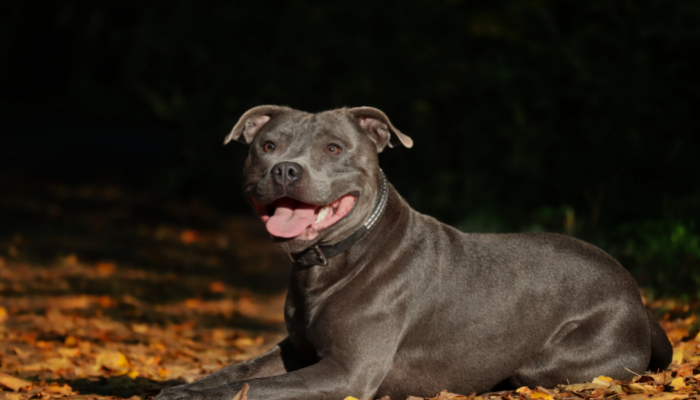
Staffy is the ideal cross between a bulldog and a terrier! What a great way to get the best of both worlds!
The desire and tendency of a Staffordshire Bull Terrier to be around people are what makes it a good companion at home and a great therapy dog!
They are also fantastic with children and maybe very trusting of strangers!
Staffordshire Bull Terrier works well in children’s hospitals and has even earned the term “nanny dog”. They are the best therapy dog for children’s hospitals or any other place where children are present.
First-time owner’s warning!
The Staffordshire Bull Terrier is not for first-time dog owners, so if you’re thinking of getting one, please reconsider!
5. Rottweiler

Rottweilers are lively, clever, and, dare I say, confident canines! They are also very friendly to humans!
Once a bond is developed, they may be an excellent emotional support dog! Yes, a word of caution: connecting with a rottweiler is essential.
They are one of the most effective therapy dogs for those who are physically or emotionally sick.
I had a Rottweiler once named, Max, he really was a very intelligent and kind dog, who helped me through my sobbing hours in my room. He really was the best therapy dog for me.
*sobs*
Best Big Therapy Dogs
We’ve finally come to the final list! The Big dogs! Buckle up and find the best big therapy dog for yourself
1. Bullmastiff
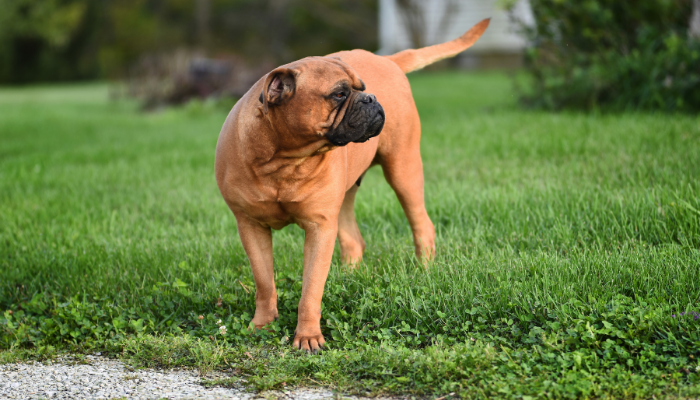
Okay! I’m sure we’ve all noticed the pattern, right?
The best therapy dog list includes any bulldog type or crossbreed!
So you already know this Bullmastiff will be an excellent dog.
Bullmastiffs is a kind and friendly breed of dog. They have a laid-back personality and are best suited to older children rather than toddlers due to their size.
They are not extremely energetic and like to walk rather than run, making them suitable for a household environment.
Bullmastiffs are excellent comfort dogs, making them one of the best therapy dogs for those suffering from anxiety and depression.
2. German Shepherds
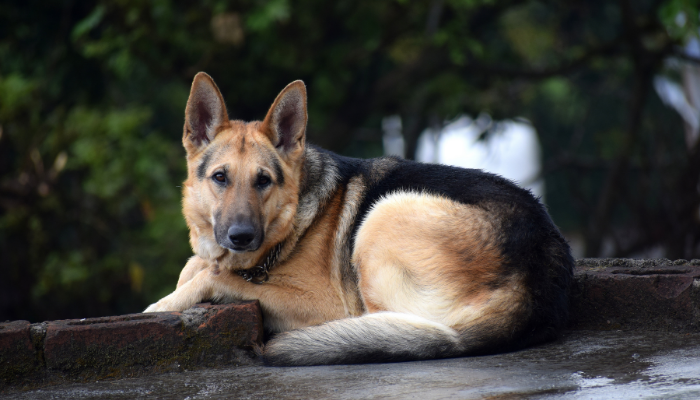
What comes to mind when you picture a police dog?
German Shepherds right!
German Shepherds are also one of the best therapy dogs because they like being with youngsters and may become connected quickly.
German shepherds are great therapy dogs due to their calm demeanor and loyalty.
They are also renowned for their bravery and dedication. They’re also quite bright, and they’re commonly employed in the military and police enforcement.
They can be taught to do just about anything. German Shepherds are also laid-back but protective, which makes them a great watchdog.
Did you know that a german shepherd is a breed of dog that excels in providing physical assistance?
3. Golden Retriever

The Golden Retriever, this sports breed has a calm, pleasant temperament and is also considered one of the most popular dog breeds due to their stunning long golden coats.
These enormous dogs are active and friendly by nature, and their temperament allows them to get along with other dogs.
Because of their social, fun-loving, and friendly temperament, they get along with children, other pets, and strangers.
They are among the best therapy dogs and can provide comfort to anyone in a home or hospital.
4. Greyhound
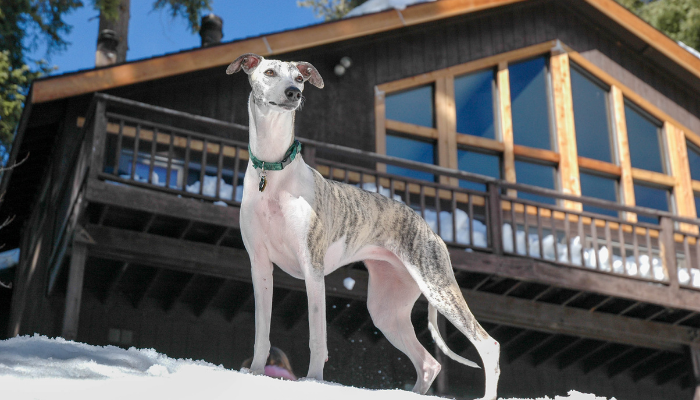
Greyhound? More like Flash since they are considered the second fastest animal on earth!
Greyhounds are social and amiable dogs with a great temperament and they are considered as one of the gentlest dogs.
When held, played with, and patted, these sweet and sensitive dogs are at their happiest.
They are highly intelligent and sensitive, and they can instantly detect moods and negative emotions, making them the best therapy dogs.
5. Labradoodle

The Labradoodle is the perfect mix of a Labrador and a poodle, both of which are on the list!
They are social and lively with other pets and get along well with both youngsters and people.
They are also compassionate and clever, and if properly taught, they can be the best therapy dogs for persons suffering from anxiety, autism, and depression.
They are the top dog breeds due to their calm and quiet nature. Labradoodles are not only wonderful family pets, but they are also one of the best therapy dogs!
6. Labrador Retriever
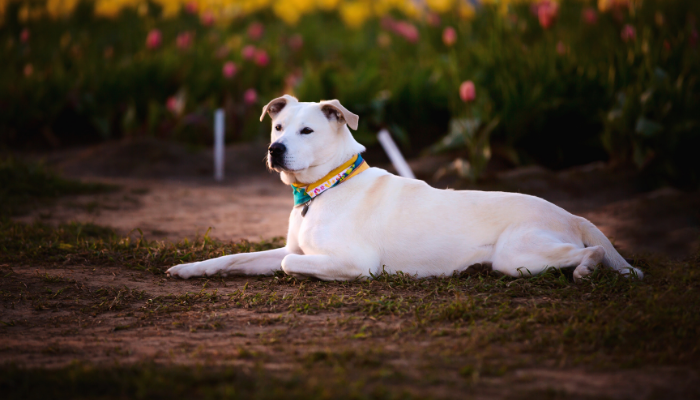
Labrador retrievers, often known as swimmer dogs, are one of the most popular dog breeds.
Because of their caring temperament, they are good companions and get along well with families and children.
Not only that, but they are naturally sensitive and loving.
They’re supposed to be the ideal combination of sociable and lively, and they’re also pretty easy to train!
They are happiest while participating in family activities.
Because of their capacity to complete tasks and delight people, they are regarded as one of the best therapy dogs and are also used for other employment reasons such as emotional support dogs and service dogs.
7. Saint Bernard
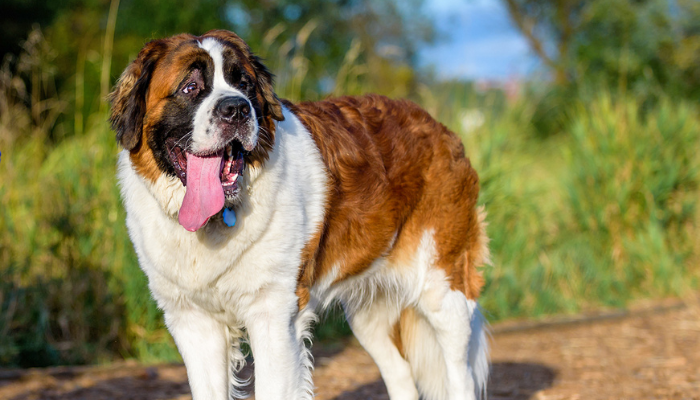
Saint Bernard or St. Bernard has a tremendous heart to match their massive stature!
Specifically bred for rescue work, they have always been involved in other jobs like service dogs and emotional support dogs.
These gentle giants are exceptionally affectionate and calm dogs, and their patient demeanor almost lends them a welcoming approach.
They are also great for both children and families.
Bear in mind that Saint Bernard is very loving and will desire to spend a lot of time with you as possible.
And don’t let their size fool you; they’re regarded as one of the best therapy dogs around!
8. Standard Poodle
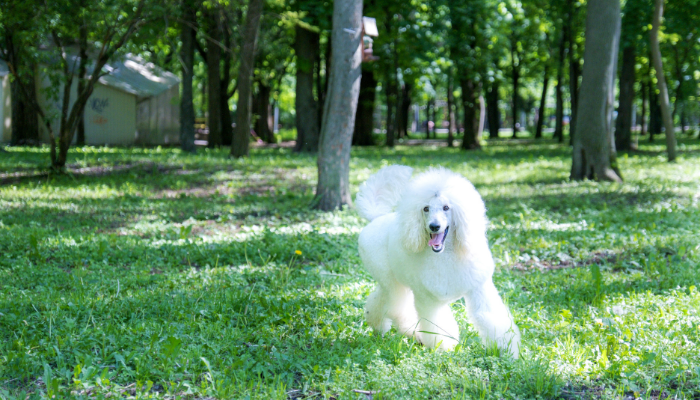
The Standard Poodle, like its smaller sibling, the Toy Poodle, is a popular therapy dog.
Poodles, as previously said, like being friendly and can be trained to do tricks that can help relieve stress and frustration.
They are one of the best breeds of therapy dogs.
They are also considered to be among the most sensitive dog breeds.
And, despite their lovely coat, they are hypoallergenic, making them an excellent dog breed for allergy patients.
Because they have a lot of energy and a lively and pleasant personality, poodles are regarded as one of the best therapy dogs for depression.
Everyone will be delighted to see an energetic Poodle ready to play, making them yet another of the best therapy dogs you can purchase and teach!
What Makes Therapy Dogs Unique?

You asked as to what makes a therapy dog?
Not only are these therapy dogs clever and energetic, but they have also been demonstrated to relieve anxiety and stress and increase serotonin levels in the individuals with whom they interact.
Patients’ social skills are also aided by therapy dogs.
Below are the characteristics of a Therapy Dog:
Intelligence
The majority of therapy dogs have a high level of intelligence. These dogs are exceptionally skilled at reading and interpreting a person’s emotions and knowing when to be excited or calm.
Sociability
These therapy dogs must also enjoy being around people, animals, children, and large groups in general, as being a therapy dog would demand them to be in such environments on a regular basis.
Gentle
Therapy dogs should be gentle and peaceful in their demeanor. When greeting a patient, it is critical that they remain calm and gentle, rather than leaping and climbing on the patients, which will frighten them.
They must be mindful of their stature and strength and conduct themselves in a calm and gentle manner.
And here’s something a bird told me: Florence Nightingale pioneered the use of animals for therapy in alleviating anxiety in patients in mental health facilities.
A Necessary Guide To Dog Therapy Training
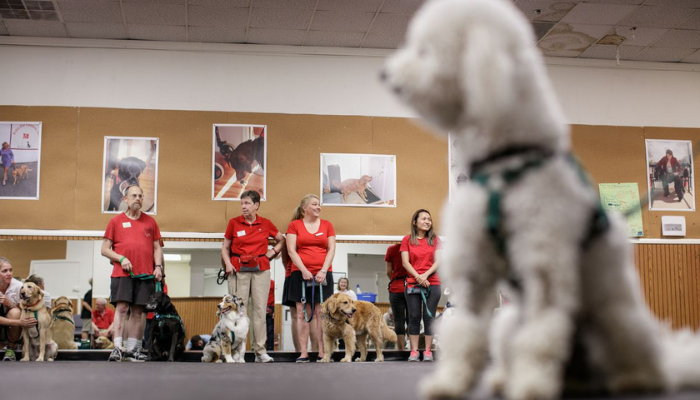
Now that we’ve covered which therapy dogs to adopt according to your preferred size, let’s move on to something quick but important!
Do Not Skip This, I repeat, Do Not Skip This.
Dog therapy training is critical for them to be able to perform the required task.
A therapy dog will need to move around a lot and meet a lot of new people every day, so it is extremely crucial to train them for it.
For a more in-depth look at therapy dog training, check out A Definitive Guide to Dog Therapy Training.
We’ve come to the end of the article, and I’m sure you’ve decided on one of the best therapy dogs listed, so here are a few things to keep in mind!
Therapy dogs are pets that have been trained by a therapy dog organization to visit hospitals, schools, nursing homes, and other locations.
However, keep in mind that when it comes to getting a therapy dog, training is essential.
Frequently Asked Questions
The best therapy dogs are generally active, calm, and sociable breeds with a very excellent and patient temperament. They are clever and easily trainable. Some of the best examples are Bichon Frise, Greyhound, and Saint Bernard dog breeds.
Labradoodles, bullmastiffs, and Cavalier King Charles Spaniels are the best dogs for anxiety. These are all extremely bright dogs with a very friendly attitude and temperament. They are all very caring and loving by nature and have a very friendly attitude and disposition.
Labrador Retrievers are the best dogs for emotional support since they are very clever and emphatic, and they are also used in other fields such as service dogs!
Their compassionate attitude and ability to care for humans are what distinguishes them as wonderful dogs.
A therapy dog organization is a place where animals, especially dogs, are helped to develop therapy assisting skills.
The best therapy dog organizations in the United States include Pet Partners in New York City and PAWS for People, which has locations in several states including Pennsylvania, Delaware, and New Jersey, to mention a few.
Woof Woof!
Greeting dog lovers and pet parents,
This was all about the best therapy dogs
We hope this article was informative and helpful!
Don’t forget to share or save this article if you’re or anyone you know is planning to adopt a dog!
We also have socials that we update regularly!!
Check out our Instagram and Youtube
Happy petting!



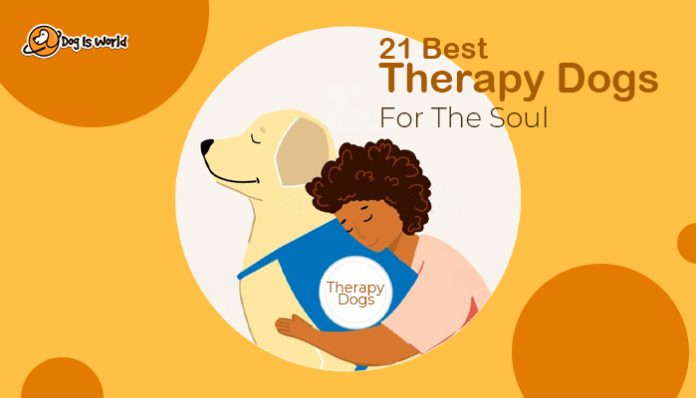









[…] size and temperament makes them amazing therapy dogs for autistic children as […]
[…] to fulfill basic criteria to start its training of becoming a therapy dog. Here is our article on therapy dogs so you can know what makes certain breeds more suitable to become therapy […]